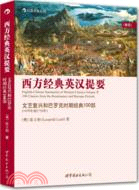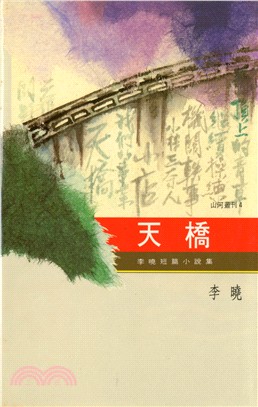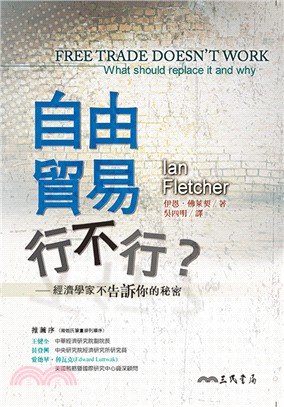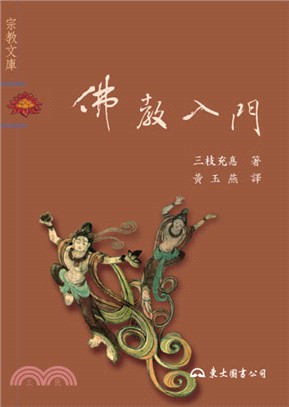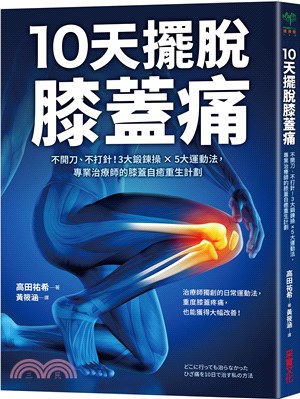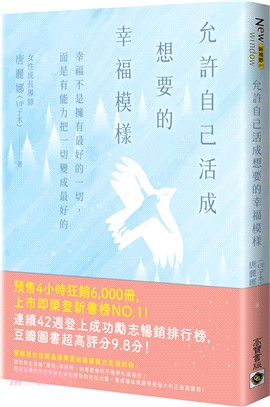相關商品
商品簡介
作者簡介
名人/編輯推薦
序
目次
商品簡介
本書為《西方經典英漢提要》第四卷,作者精選了公元1450年到1750年間經典著作100餘部,以簡潔流暢的英、漢雙語概寫著作的主要內容。著作涵括了文藝復興及巴洛克時期文學、嗜血、哲學、法學和宗教諸領。
作者簡介
雷立柏(Leopold Leeb),古典語文學家。1967年生于奧地利Hollabrunn,1985年入大學(Hochschule St. Gabriel)學習哲學、宗教學、基督教神學。1988至1991年在臺北輔仁大學學習漢語和中國哲學,后回奧地利繼續上大學。1995年獲得碩士學位后來到北京,考入北京大學哲學系博士班,在湯一介先生和陳來先生的指導下完成博士論文《張衡、科學與宗教》,1999年獲得博士學位。1999年到2004年1月在中國社會科學院世界宗教所進行翻譯和研究,并開始教授歐洲古代語言(拉丁語,古希臘語,古希伯來語)。2004年2月至今任教于中國人民大學文學院,開設“拉丁語基礎”;“古希臘語基礎”;“拉丁語文學史”;“古希臘語文學史”;“古希臘文化概論”;“歐洲中世紀文學史”;“古希伯來語”等課程,廣受學生贊譽。漢語著作:《張衡、科學與宗教》(2000年出版),《論基督之大與小·1900-1950年間華人知識分子眼中的基督教》(2000年),《圣經的語言和思想》(2000年),《古希臘羅馬與基督宗教》(2002年),《基督宗教知識辭典》(2003年),《拉丁成語辭典》(2006年),《古希臘羅馬及教父時期名著名言詞典》(2007年),《漢語神學術語辭典》(2007年),《拉-英-德-漢法律格言詞典》(2008年)。校對的或部分上翻譯的著作包括:白舍客《基督宗教倫理學》(上海三聯,2002年),拉辛格《基督教導論》(上海三聯,2002年),吳經熊《超越東西方》(2002年,社科文獻),畢爾邁爾《古代教會史》(2009年,宗教文慧),《韋洛克拉丁語教程》(2009年,世界圖書)。研究方向和興趣:翻譯問題,科學與宗教,歐洲古代語言和思想,古典語文學,歐洲中世紀思想史,基督宗教文化傳統,古代經典的解釋,比較成語學。
名人/編輯推薦
《西方經典英漢提要?第4卷:文藝復興和巴羅克時期經典100部(1450年-1750年)》編輯推薦:外籍教授專為中國學生寫作西方經典入門讀物:作者雷立柏為奧地利籍古典語文學家,在北京大學獲得哲學博士學位,學貫中西,熟諳古希臘語、拉丁語、希伯來語、英語、德語、漢語等多種語言。在人民大學教授“拉丁語基礎”、“古希臘語基礎”、“拉丁語文學史”、“古希臘語文學史”等課程時,深感沒有合適的教材可以使用,于是決定自己編寫這套能夠幫助學生學習西方經典文化的英漢提要。
打破學科界限,西方經典著作一網打盡:《西方經典英漢提要?第4卷:文藝復興和巴羅克時期經典100部(1450年-1750年)》并不依現代學術分科體系選取文獻,而是以它們對西方智識傳統的貢獻為擇取標準,優先錄取那些提供了整全知識視野的“偉大敘事”,這種打破學科壁壘的做法將會使每一位讀者從中獲益,無論你是對文學、歷史、哲學,還是對宗教、法學或藝術感興趣。《西方經典英漢提要?第4卷:文藝復興和巴羅克時期經典100部(1450年-1750年)》中介紹的部分書籍尚無中譯本,讀者可以借助本體要先睹為快。
注重語文學的寫作方式,帶領讀者臨近原汁原味的西方經典:書中漢語提要部分的專名使用西文原文,一方面避免翻譯不統一所引起的誤解,另一方面有助于讀者熟悉原典,便于讀者進一步查閱原文和深入研究。書后附有關鍵詞匯、人名、書名的拉丁、希臘、英、漢四語索引,相當于一部小型的語文學詞典,包含豐富的語文學知識,是初習古典語文學的學子不可多得的便利工具。
中英雙語簡易流暢、樸實可讀。
打破學科界限,西方經典著作一網打盡:《西方經典英漢提要?第4卷:文藝復興和巴羅克時期經典100部(1450年-1750年)》并不依現代學術分科體系選取文獻,而是以它們對西方智識傳統的貢獻為擇取標準,優先錄取那些提供了整全知識視野的“偉大敘事”,這種打破學科壁壘的做法將會使每一位讀者從中獲益,無論你是對文學、歷史、哲學,還是對宗教、法學或藝術感興趣。《西方經典英漢提要?第4卷:文藝復興和巴羅克時期經典100部(1450年-1750年)》中介紹的部分書籍尚無中譯本,讀者可以借助本體要先睹為快。
注重語文學的寫作方式,帶領讀者臨近原汁原味的西方經典:書中漢語提要部分的專名使用西文原文,一方面避免翻譯不統一所引起的誤解,另一方面有助于讀者熟悉原典,便于讀者進一步查閱原文和深入研究。書后附有關鍵詞匯、人名、書名的拉丁、希臘、英、漢四語索引,相當于一部小型的語文學詞典,包含豐富的語文學知識,是初習古典語文學的學子不可多得的便利工具。
中英雙語簡易流暢、樸實可讀。
序
總 序
就早期的來龍去脈而言,歐洲文化的根源在埃及、巴勒斯坦、敘利亞和波斯地區,因此“西方文化”和“西方經典”是有爭論的概念。然而從文學和思想來看,古希臘的傳統在人類思想史上形成了一種很關鍵的新開端。因此,本系列從荷馬開始梳理歐洲經典的悠久傳統,其目標是提供關于一些重要著作及其作者的基本知識。當然,僅僅輪廓性地描述一部經典的內容是遠遠不夠的,應該還要鑒定每一部經典在文學史及思想史上的位置和影響,又要提供一些分析和解釋,以及關于該著作的研究書目。不過,這一切都超出本系列的范圍。
歐洲文化以及西方思想史應該被視為一個整體。這就意味著人們應該研究每一個時代的作者以及前后著作之間的關聯。一種比較全面的角度也應該注意到不同的知識領域,因為一些作者可能通過詩歌表達一些哲學理念或他們會將神話與歷史結合起來。因此,文學、歷史、哲學、法律和宗教在很多古代經典中是分不開的。比如奧古斯丁的《上帝之城》談論歷史、倫理、政治、神話學、宗教信仰以及解釋學的問題。
本系列分為五卷:《古希臘羅馬經典100部》(公元前800年到公元150年)、《古代晚期經典100部》(公元150年到650年)、《中世紀經典100部》(650年到1450年)、《文藝復興和巴羅克時期經典100部》(1450到1750年)、《近現代經典100部》(1750年到1950年)。每一卷都可以充當一部獨立的文集,因此在每一卷附加索引,其中羅列作者、著作和重要概念的原名、英語及漢語的翻譯。本系列的經典主要屬于文學、歷史學、哲學、法學和宗教學的領域,但也包括一些著名的自然科學著作和百科全書式的著作。在選擇經典時我們優先收錄那些形成比較完整敘事的著作,因此殘片式的著作、“詩歌集”、“信集”和“講演集”類型的著作比較少。一些重要的作者在正文中被忽略,但在索引中仍然有關于他們的基本資料。因為本系列特別注重經典的原文,在漢語的敘述中仍然使用ABC寫出西文的人名、地名和書名。“關于專名,除有慣譯者外,一般均不譯成漢語對音。因為單是《荷馬史詩》中的英雄Achilleus就有阿喀琉斯、阿基琉斯、阿戲留、阿溪里等許多譯名,難定取舍,所以都不采用,一概使用原文。”(參見羅念生,《古希臘語漢語詞典》,商務印書館,2004年,前言)。西文專名的漢譯能在索引中查獲。
希望本系列能夠幫助讀者更好地了解和欣賞西方文學及思想的高度、深度和廣度!
編者雷立柏
2009年于北京
The Series of “English-Chinese
Summaries of Western Classics”
General Preface
The more ancient origins of European culture are in Egypt, Palestine, Syria and Persia, and thus the expressions “western culture” and “western classics” are debatable. However, as far as literature and thought are concerned, the tradition of ancient Greece forms a decisive new beginning in the intellectual history of mankind. Thus this series starts with Homer and from there follows the long stream of European classics. The purpose of the collection is to provide basic knowledge about some important classical works and about their authors. Of course, a simple summary of the contents of a classic is not enough, it would also be necessary to assess the position and influence of each work in the history of literature and thought, to offer analysis and possible interpretations, and to add a short bibliography of the studies on each of the classics. However, this exceeds the scope of this series.
European culture and the intellectual history of the West should be understood as a whole. This implies that we should be acquainted with the scholars of every period and with the continuity that links earlier and later works. A more wholistic approach will also pay attention to different fields of knowledge, because many authors may use poetry to express philosophical ideas or combine myth and history. Thus literature, history, philosophy, law, and religion are intertwined in many of the classical writings. For example, Augustine’s The City of God discusses questions of history, ethics, politics, mythology, religious faith, and hermeneutical questions.
This series is divided into five volumes: “100 Classics of Ancient Greece and Rome” (800 BC—150 AD), “100 Classics of Late Antiquity” (150—650 AD), “100 Classics of the Middle Ages” (650—1450 AD), “100 Classics of Renaissance and Baroque” (1450—1750), “100 Classics of the Modern Age” (1750—1950). Each volume is designed as an independent collection and thus has an index which contains the original names of the authors, important works and ideas, and the English and Chinese transcriptions. The classical works chosen in this series are mainly taken from the areas of literature, history, philosophy, law, and religion, but there are also some famous scientific works and encyclopedic collections. Preference was given to those works who present a complete narrative, thus collections of fragments, poems, letters, and speeches have been somewhat neglected. Some important authors may not be mentioned in the text, but they appear in the index. Since this series pays special attention to the original languages of the classics, the Chinese text uses the ABC for western personal names, place names, and book titles. “Proper names are generally not transliterated into Chinese, except for commonly used translations. Take for example the different Chinese translations for the hero Achilles in Homer’s epic, it will be hard to choose between ‘A-ka-liu-si’, ‘A-ji-liu-si’, ‘A-xi-liu’, ‘A-xi-li’ and many other different translations. Thus we do not use any of these transliterations and keep the original way of writing.”(Luo Niansheng, Classical Greek-Chinese Dictionary, Shangwu, 2004, preface). The Chinese transliterations of western names can be found in the index.
May this series help the reader to better understand and enjoy the height, depth, and width of western literature and thought!
Leopold Leeb, Beijing 2009
序
15、16世紀迎來了一種教育性的、知識性的和藝術性的運動,19世紀的人稱其為“文藝復興”。這個詞來自拉丁語的renasci(重生)表示古代知識的復興,即古希臘和拉丁語的傳統。13世紀的偉大經院思想家(比如Albertus和Thomas)就對Aristoteles的思想有濃厚的興趣,像Petrarca和Boccaccio等一些意大利人,就被Cicero和古典神話學所吸引,但只有在Chrysoloras來到Florentia之后(1397年),意大利的學者才有機會系統地學習古希臘語。一百年以后Calepino的詞典才被出版,但在1500年人們能夠使用印刷技術來出版古希臘和古代拉丁語的文獻。此時甚至《舊約》的希伯來文獻也得到了更多的重視。
文藝復興時期的學者,比如Erasmus、Jimenez、Melanchthon、Etienne等人,追求比較世俗的博學知識和優雅的辭藻,但也看重教育思想和宗教理想:他們試圖培養一些學生,并幫助他們理解古典文獻和《圣經》的原文。因此文藝復興時代在很多方面都是中世紀宗教狂熱的延續。該時期的很多著作是以宗教信仰為核心的,或是來自《圣經》的譯本、或是靈修性的、神秘學的文獻,或是教育性的書和辯論論文。而且相當多作者同時也是隱修者、司鐸或修女,比如阿維拉的特蕾莎。
1500年前后的地理發現極大地拓寬了歐洲學者的視野。文藝復興學者的人文主義非常廣泛,而這種廣泛的人文主義也影響了傳教士的基本態度。因為他們遇到新的語言和文化并試圖與之對話的情形,亦如他們曾試圖欣賞和接納古希臘神話和古代文化的過程。這過程的第一步,是編寫這些非歐洲語言的雙語詞典(參見Ricci和Rhodes)。
其他發現,比如在天文學(Copernicus、Kepler、Galilei)、物理學(Descartes、Newton)、解剖學(Vesalius)等領域,與地理知識的擴展相匹配,而在法學方面,與本地民族的接觸引出了國際法的新概念(參見Vitoria、Grotius、Pufendorf)。
在哲學方面,文藝復興代表一種新的人生觀。此時的學者認為人是宇宙的中心(Mirandola),自我意識成為可靠的思想基礎(Descartes)。個人的持續性追求和創造性活動變得尤其重要,以至于超過永恒理念。中世紀的唯名論者曾拒絕了普遍價值的權威性,而在文藝復興時期,人們開始討論Aristoteles的宇宙觀以及教會文獻的權威性。在各種權威動搖的時候人們在人的理性中尋求到一個新的共識。對理性的信賴激發了科學研究,帶來了某種寬容(參見Montaigne和Browne),同時啟發了Robinson Crusoe的獨立性,甚至Fielding著作中那位無所不知的敘述者,但也招來了Bayle和Voltaire的懷疑主義。在另一方面,巫婆熱——它的高峰不在中世紀,而是在1500年以后的200年——Hamlet的瘋狂以及Swift及Swedenborg的奇怪夢想都表明那些非理性因素始終存在于人心,甚至縈繞在“理性的時代”。
由于16世紀的宗教改革者,對教會傳統權威的攻擊變得更為直接,但直到第18世紀才出現比較多可稱其為“自由思想家”的人。有時候他們會遭到自己圈子完全的排斥(比如Spinoza), 卻成為另一些人眼中偉大的哲學家。由于對歐洲文化根源的理解無法在歐洲形成穩定合一的思想,文藝復興時期的多元化和內在張力在之后的時期更加劇烈。歐洲在很大的程度上,已經失去了曾經那種不容置疑的共識和信仰,而西班牙、法、英等帝國的崛起加深了從中世紀傳承至此的民族主義思想。另一方面,這種民族主義也促進各國語言中文學傳統的形成。比如,很多意大利語、西班牙語、法語和英語的經典著作都創作于1500—1700年間。尤其在法國的“太陽王”路易十四世的時代,法語在哲學、歷史學、文學評論和神學方面是最有影響力的語言(除拉丁語之外)。然而,很多重要的學術著作仍然是拉丁語寫的,比如牛頓的《數學原理》。
《西方經典英漢提要》第四卷中的作者和著作只是眾多人物和無數著作的一個小部分,如果讀者想了解更多,請參考索引。本書的資料主要來自Encyclopedia Britannica(《不列顛百科全書》,Chicago 1985年)、Reader’s Companion to World Literature(《世界文學解讀》,C. S. Brown編,Dryden 出版社,New York 1956)、Lexikon fuer Theologie und Kirche(《神學與教會百科全書》,Herder,Freiburg 2002年)、Aus dem Reichtum der Dichtung,Mittelalter,Renaissance,Barock(《文學的富饒?中世紀、文藝復興、巴羅克》,W. Sanz編,Vienna 1975)和Kindlers Literaturlexikon(《肯德勒文學大百科全書》,Munich 1971)。我謝謝黃星女士,她幫助我看漢語的部分,更謝謝后浪出版公司的吳興元先生,他始終支持這個系列的出版。
雷立柏,北京,中國人民大學
2011年12月
Preface
The 15th and 16th centuries ushered in an educational,intellectual and artistic movement that was later (in the 19th century) called “Renaissance”. This word comes from the Latin “renasci”(to be reborn) and denotes the rebirth of classical scholarship,the revival of the ancient Greek and Latin tradition. The great scholastics of the 13th century(like Albert and Thomas),were ardently interested in Aristotle’s thought,and Italians like Petrarch and Boccaccio felt attracted to Cicero and classical mythology,but only since the arrival of Chrysoloras in Florence (1397) scholars in Italy had an opportunity to study the Greek language in a systematic way. It took another century before Calepino’s dictionary appeared in print,but by 1500 the art of printing made it possible to edit the Greek and Latin classical texts. Even the Hebrew texts of the Old Testament received now more attention.
Renaissance scholars like Erasmus,Jimenez,Melanchthon,and Etienne,combined the more secular quest for erudition and beauty of literary style with educational efforts and religious ideals:they tried to educate students and helped them to read and understand the classical and Biblical texts. Thus the era of the Renaissance was in many ways a continuation of the religious fervor of the Middle Ages. Many of the famous works of the era are devoted to religious themes,be it Bible translations,spiritual and mystical texts,educational works,or polemic treatises. And quite many of the authors are still monks,priests,or nuns,for example Teresa of Avila.
The geographical discoveries around the year 1500 enormously widened the horizon of European scholars. The broad humanism of the Renaissance scholars also was reflected in the approach of missionaries who encountered other languages and cultures and tried to dialog with these cultures just like they had tried to appreciate and integrate classical Greek mythology and culture. One of the first steps was to elaborate bilingual dictionaries of these new non-European languages(confer Ricci and Rhodes).
The expansion of geographical knowledge was matched by discoveries in the fields of astronomy(Copernicus,Galilei),physics(Descartes,Newton),anatomy(Vesalius),and law,where the contact with indigenous tribes led to new conceptions of international law (Vitoria,Grotius,Pufendorf).
In the field of philosophy the Renaissance represented a new approach to human life. Man was now conceived as the center of the universe(Mirandola),and self-consciousness became the foundation of reliable thinking(Descartes). The continuous search and creative dynamism of the individual were now becoming more important than the eternal ideas. The nominalists of the Middle Ages had rejected the authority of universal values,and in the Renaissance Aristotle’s world view and even the authority of ecclesiastical texts was debated. In this time of shaking authorities new consensus was sought in human reason. This faith in human reasoning inspired scientific research,a certain tolerance(Montaigne and Browne),the independent actions of Robinson Crusoe,the omniscient narrator of Fielding’s works,but also the skepticism of Bayle and Voltaire. On the other hand,the witch craze,which reached its peak not in the Middle Ages but in the two centuries after 1500,Hamlet’s madness,and Swift’s and Swedenborg’s strange visions show that the irrational elements that were never absent,vexing even the “age of reason”.
Due to the reformers of the 16th century the attacks on the traditional authority of the Church became more outspoken,but only at the end of the period there appeared more authors who might be called “freethinkers”. These were sometimes completely rejected by their own communities(like Spinoza) but found acceptance in other circles as great philosophers. As the quest for understanding the origins of European culture could not form a reliable unity in Europe,the pluralism and the contradictions of Renaissance thought even increased during the following centuries. To a large extent Europe had lost an unquestioned unity of thinking and believing,and the rise of empires in Spain,France,and Britain aggravated the incipient nationalism inherited from the Middle Ages. On the other hand this nationalism speeded the formation of national literatures in the local languages. Many of the classical masterpieces of Italian,Spanish,French,and English literature were created in the period from 1500 to 1700. Especially in the age of the “Sun King” Louis XIV. French (besides Latin) was the most influential language in the fields of philosophy,history,literary criticism,and theology. However,many important scientific works continued to be written in Latin,for example Newton’s Principia mathematica.
The authors and works mentioned in this volume are only a small selection. For more names and more background information concerning the period please consult the index. Much of the material presented in this volume comes from the Encyclopedia Britannica(Chicago 1985),the Reader’s Companion to World Literature(ed. C. S. Brown,Dryden Press,New York 1956),Lexikon fuer Theologie und Kirche(Herder,Freiburg 2002),Aus dem Reichtum der Dichtung,Mittelalter,Renaissance,Barock(ed. W. Sanz,Vienna 1975),and from the Kindlers Literaturlexikon(Munich 1971). My thanks go to Mrs. Huang Xing who helped me to read the Chinese manuscript,and to Mr. Wu Xingyuan from the Houlang editorial,for his constant support.
Leo Leeb,Beijing,Renmin University Dec. 2011
就早期的來龍去脈而言,歐洲文化的根源在埃及、巴勒斯坦、敘利亞和波斯地區,因此“西方文化”和“西方經典”是有爭論的概念。然而從文學和思想來看,古希臘的傳統在人類思想史上形成了一種很關鍵的新開端。因此,本系列從荷馬開始梳理歐洲經典的悠久傳統,其目標是提供關于一些重要著作及其作者的基本知識。當然,僅僅輪廓性地描述一部經典的內容是遠遠不夠的,應該還要鑒定每一部經典在文學史及思想史上的位置和影響,又要提供一些分析和解釋,以及關于該著作的研究書目。不過,這一切都超出本系列的范圍。
歐洲文化以及西方思想史應該被視為一個整體。這就意味著人們應該研究每一個時代的作者以及前后著作之間的關聯。一種比較全面的角度也應該注意到不同的知識領域,因為一些作者可能通過詩歌表達一些哲學理念或他們會將神話與歷史結合起來。因此,文學、歷史、哲學、法律和宗教在很多古代經典中是分不開的。比如奧古斯丁的《上帝之城》談論歷史、倫理、政治、神話學、宗教信仰以及解釋學的問題。
本系列分為五卷:《古希臘羅馬經典100部》(公元前800年到公元150年)、《古代晚期經典100部》(公元150年到650年)、《中世紀經典100部》(650年到1450年)、《文藝復興和巴羅克時期經典100部》(1450到1750年)、《近現代經典100部》(1750年到1950年)。每一卷都可以充當一部獨立的文集,因此在每一卷附加索引,其中羅列作者、著作和重要概念的原名、英語及漢語的翻譯。本系列的經典主要屬于文學、歷史學、哲學、法學和宗教學的領域,但也包括一些著名的自然科學著作和百科全書式的著作。在選擇經典時我們優先收錄那些形成比較完整敘事的著作,因此殘片式的著作、“詩歌集”、“信集”和“講演集”類型的著作比較少。一些重要的作者在正文中被忽略,但在索引中仍然有關于他們的基本資料。因為本系列特別注重經典的原文,在漢語的敘述中仍然使用ABC寫出西文的人名、地名和書名。“關于專名,除有慣譯者外,一般均不譯成漢語對音。因為單是《荷馬史詩》中的英雄Achilleus就有阿喀琉斯、阿基琉斯、阿戲留、阿溪里等許多譯名,難定取舍,所以都不采用,一概使用原文。”(參見羅念生,《古希臘語漢語詞典》,商務印書館,2004年,前言)。西文專名的漢譯能在索引中查獲。
希望本系列能夠幫助讀者更好地了解和欣賞西方文學及思想的高度、深度和廣度!
編者雷立柏
2009年于北京
The Series of “English-Chinese
Summaries of Western Classics”
General Preface
The more ancient origins of European culture are in Egypt, Palestine, Syria and Persia, and thus the expressions “western culture” and “western classics” are debatable. However, as far as literature and thought are concerned, the tradition of ancient Greece forms a decisive new beginning in the intellectual history of mankind. Thus this series starts with Homer and from there follows the long stream of European classics. The purpose of the collection is to provide basic knowledge about some important classical works and about their authors. Of course, a simple summary of the contents of a classic is not enough, it would also be necessary to assess the position and influence of each work in the history of literature and thought, to offer analysis and possible interpretations, and to add a short bibliography of the studies on each of the classics. However, this exceeds the scope of this series.
European culture and the intellectual history of the West should be understood as a whole. This implies that we should be acquainted with the scholars of every period and with the continuity that links earlier and later works. A more wholistic approach will also pay attention to different fields of knowledge, because many authors may use poetry to express philosophical ideas or combine myth and history. Thus literature, history, philosophy, law, and religion are intertwined in many of the classical writings. For example, Augustine’s The City of God discusses questions of history, ethics, politics, mythology, religious faith, and hermeneutical questions.
This series is divided into five volumes: “100 Classics of Ancient Greece and Rome” (800 BC—150 AD), “100 Classics of Late Antiquity” (150—650 AD), “100 Classics of the Middle Ages” (650—1450 AD), “100 Classics of Renaissance and Baroque” (1450—1750), “100 Classics of the Modern Age” (1750—1950). Each volume is designed as an independent collection and thus has an index which contains the original names of the authors, important works and ideas, and the English and Chinese transcriptions. The classical works chosen in this series are mainly taken from the areas of literature, history, philosophy, law, and religion, but there are also some famous scientific works and encyclopedic collections. Preference was given to those works who present a complete narrative, thus collections of fragments, poems, letters, and speeches have been somewhat neglected. Some important authors may not be mentioned in the text, but they appear in the index. Since this series pays special attention to the original languages of the classics, the Chinese text uses the ABC for western personal names, place names, and book titles. “Proper names are generally not transliterated into Chinese, except for commonly used translations. Take for example the different Chinese translations for the hero Achilles in Homer’s epic, it will be hard to choose between ‘A-ka-liu-si’, ‘A-ji-liu-si’, ‘A-xi-liu’, ‘A-xi-li’ and many other different translations. Thus we do not use any of these transliterations and keep the original way of writing.”(Luo Niansheng, Classical Greek-Chinese Dictionary, Shangwu, 2004, preface). The Chinese transliterations of western names can be found in the index.
May this series help the reader to better understand and enjoy the height, depth, and width of western literature and thought!
Leopold Leeb, Beijing 2009
序
15、16世紀迎來了一種教育性的、知識性的和藝術性的運動,19世紀的人稱其為“文藝復興”。這個詞來自拉丁語的renasci(重生)表示古代知識的復興,即古希臘和拉丁語的傳統。13世紀的偉大經院思想家(比如Albertus和Thomas)就對Aristoteles的思想有濃厚的興趣,像Petrarca和Boccaccio等一些意大利人,就被Cicero和古典神話學所吸引,但只有在Chrysoloras來到Florentia之后(1397年),意大利的學者才有機會系統地學習古希臘語。一百年以后Calepino的詞典才被出版,但在1500年人們能夠使用印刷技術來出版古希臘和古代拉丁語的文獻。此時甚至《舊約》的希伯來文獻也得到了更多的重視。
文藝復興時期的學者,比如Erasmus、Jimenez、Melanchthon、Etienne等人,追求比較世俗的博學知識和優雅的辭藻,但也看重教育思想和宗教理想:他們試圖培養一些學生,并幫助他們理解古典文獻和《圣經》的原文。因此文藝復興時代在很多方面都是中世紀宗教狂熱的延續。該時期的很多著作是以宗教信仰為核心的,或是來自《圣經》的譯本、或是靈修性的、神秘學的文獻,或是教育性的書和辯論論文。而且相當多作者同時也是隱修者、司鐸或修女,比如阿維拉的特蕾莎。
1500年前后的地理發現極大地拓寬了歐洲學者的視野。文藝復興學者的人文主義非常廣泛,而這種廣泛的人文主義也影響了傳教士的基本態度。因為他們遇到新的語言和文化并試圖與之對話的情形,亦如他們曾試圖欣賞和接納古希臘神話和古代文化的過程。這過程的第一步,是編寫這些非歐洲語言的雙語詞典(參見Ricci和Rhodes)。
其他發現,比如在天文學(Copernicus、Kepler、Galilei)、物理學(Descartes、Newton)、解剖學(Vesalius)等領域,與地理知識的擴展相匹配,而在法學方面,與本地民族的接觸引出了國際法的新概念(參見Vitoria、Grotius、Pufendorf)。
在哲學方面,文藝復興代表一種新的人生觀。此時的學者認為人是宇宙的中心(Mirandola),自我意識成為可靠的思想基礎(Descartes)。個人的持續性追求和創造性活動變得尤其重要,以至于超過永恒理念。中世紀的唯名論者曾拒絕了普遍價值的權威性,而在文藝復興時期,人們開始討論Aristoteles的宇宙觀以及教會文獻的權威性。在各種權威動搖的時候人們在人的理性中尋求到一個新的共識。對理性的信賴激發了科學研究,帶來了某種寬容(參見Montaigne和Browne),同時啟發了Robinson Crusoe的獨立性,甚至Fielding著作中那位無所不知的敘述者,但也招來了Bayle和Voltaire的懷疑主義。在另一方面,巫婆熱——它的高峰不在中世紀,而是在1500年以后的200年——Hamlet的瘋狂以及Swift及Swedenborg的奇怪夢想都表明那些非理性因素始終存在于人心,甚至縈繞在“理性的時代”。
由于16世紀的宗教改革者,對教會傳統權威的攻擊變得更為直接,但直到第18世紀才出現比較多可稱其為“自由思想家”的人。有時候他們會遭到自己圈子完全的排斥(比如Spinoza), 卻成為另一些人眼中偉大的哲學家。由于對歐洲文化根源的理解無法在歐洲形成穩定合一的思想,文藝復興時期的多元化和內在張力在之后的時期更加劇烈。歐洲在很大的程度上,已經失去了曾經那種不容置疑的共識和信仰,而西班牙、法、英等帝國的崛起加深了從中世紀傳承至此的民族主義思想。另一方面,這種民族主義也促進各國語言中文學傳統的形成。比如,很多意大利語、西班牙語、法語和英語的經典著作都創作于1500—1700年間。尤其在法國的“太陽王”路易十四世的時代,法語在哲學、歷史學、文學評論和神學方面是最有影響力的語言(除拉丁語之外)。然而,很多重要的學術著作仍然是拉丁語寫的,比如牛頓的《數學原理》。
《西方經典英漢提要》第四卷中的作者和著作只是眾多人物和無數著作的一個小部分,如果讀者想了解更多,請參考索引。本書的資料主要來自Encyclopedia Britannica(《不列顛百科全書》,Chicago 1985年)、Reader’s Companion to World Literature(《世界文學解讀》,C. S. Brown編,Dryden 出版社,New York 1956)、Lexikon fuer Theologie und Kirche(《神學與教會百科全書》,Herder,Freiburg 2002年)、Aus dem Reichtum der Dichtung,Mittelalter,Renaissance,Barock(《文學的富饒?中世紀、文藝復興、巴羅克》,W. Sanz編,Vienna 1975)和Kindlers Literaturlexikon(《肯德勒文學大百科全書》,Munich 1971)。我謝謝黃星女士,她幫助我看漢語的部分,更謝謝后浪出版公司的吳興元先生,他始終支持這個系列的出版。
雷立柏,北京,中國人民大學
2011年12月
Preface
The 15th and 16th centuries ushered in an educational,intellectual and artistic movement that was later (in the 19th century) called “Renaissance”. This word comes from the Latin “renasci”(to be reborn) and denotes the rebirth of classical scholarship,the revival of the ancient Greek and Latin tradition. The great scholastics of the 13th century(like Albert and Thomas),were ardently interested in Aristotle’s thought,and Italians like Petrarch and Boccaccio felt attracted to Cicero and classical mythology,but only since the arrival of Chrysoloras in Florence (1397) scholars in Italy had an opportunity to study the Greek language in a systematic way. It took another century before Calepino’s dictionary appeared in print,but by 1500 the art of printing made it possible to edit the Greek and Latin classical texts. Even the Hebrew texts of the Old Testament received now more attention.
Renaissance scholars like Erasmus,Jimenez,Melanchthon,and Etienne,combined the more secular quest for erudition and beauty of literary style with educational efforts and religious ideals:they tried to educate students and helped them to read and understand the classical and Biblical texts. Thus the era of the Renaissance was in many ways a continuation of the religious fervor of the Middle Ages. Many of the famous works of the era are devoted to religious themes,be it Bible translations,spiritual and mystical texts,educational works,or polemic treatises. And quite many of the authors are still monks,priests,or nuns,for example Teresa of Avila.
The geographical discoveries around the year 1500 enormously widened the horizon of European scholars. The broad humanism of the Renaissance scholars also was reflected in the approach of missionaries who encountered other languages and cultures and tried to dialog with these cultures just like they had tried to appreciate and integrate classical Greek mythology and culture. One of the first steps was to elaborate bilingual dictionaries of these new non-European languages(confer Ricci and Rhodes).
The expansion of geographical knowledge was matched by discoveries in the fields of astronomy(Copernicus,Galilei),physics(Descartes,Newton),anatomy(Vesalius),and law,where the contact with indigenous tribes led to new conceptions of international law (Vitoria,Grotius,Pufendorf).
In the field of philosophy the Renaissance represented a new approach to human life. Man was now conceived as the center of the universe(Mirandola),and self-consciousness became the foundation of reliable thinking(Descartes). The continuous search and creative dynamism of the individual were now becoming more important than the eternal ideas. The nominalists of the Middle Ages had rejected the authority of universal values,and in the Renaissance Aristotle’s world view and even the authority of ecclesiastical texts was debated. In this time of shaking authorities new consensus was sought in human reason. This faith in human reasoning inspired scientific research,a certain tolerance(Montaigne and Browne),the independent actions of Robinson Crusoe,the omniscient narrator of Fielding’s works,but also the skepticism of Bayle and Voltaire. On the other hand,the witch craze,which reached its peak not in the Middle Ages but in the two centuries after 1500,Hamlet’s madness,and Swift’s and Swedenborg’s strange visions show that the irrational elements that were never absent,vexing even the “age of reason”.
Due to the reformers of the 16th century the attacks on the traditional authority of the Church became more outspoken,but only at the end of the period there appeared more authors who might be called “freethinkers”. These were sometimes completely rejected by their own communities(like Spinoza) but found acceptance in other circles as great philosophers. As the quest for understanding the origins of European culture could not form a reliable unity in Europe,the pluralism and the contradictions of Renaissance thought even increased during the following centuries. To a large extent Europe had lost an unquestioned unity of thinking and believing,and the rise of empires in Spain,France,and Britain aggravated the incipient nationalism inherited from the Middle Ages. On the other hand this nationalism speeded the formation of national literatures in the local languages. Many of the classical masterpieces of Italian,Spanish,French,and English literature were created in the period from 1500 to 1700. Especially in the age of the “Sun King” Louis XIV. French (besides Latin) was the most influential language in the fields of philosophy,history,literary criticism,and theology. However,many important scientific works continued to be written in Latin,for example Newton’s Principia mathematica.
The authors and works mentioned in this volume are only a small selection. For more names and more background information concerning the period please consult the index. Much of the material presented in this volume comes from the Encyclopedia Britannica(Chicago 1985),the Reader’s Companion to World Literature(ed. C. S. Brown,Dryden Press,New York 1956),Lexikon fuer Theologie und Kirche(Herder,Freiburg 2002),Aus dem Reichtum der Dichtung,Mittelalter,Renaissance,Barock(ed. W. Sanz,Vienna 1975),and from the Kindlers Literaturlexikon(Munich 1971). My thanks go to Mrs. Huang Xing who helped me to read the Chinese manuscript,and to Mr. Wu Xingyuan from the Houlang editorial,for his constant support.
Leo Leeb,Beijing,Renmin University Dec. 2011
目次
《西方經典英漢提要》總序
序
大事年表
第一篇
意大利文藝復興的擴展 (1450年到1520年)
阿爾貝提
001.《論家庭》
維基歐
002.《論兒童教育》
瓦拉
003.《拉丁語的魅力》
印斯提托里斯
004.《巫婆之錘》
菲奇諾
005.《論基督宗教》
吉麥內茲
006.《孔普魯托并排版圣經》
卡勒比諾
007.《詞典》
羅伊希林
008.《猶太神秘主義》
布蘭特
009.《愚人船》
彼科?德拉?米蘭多拉
010.《論人的尊嚴》
伊拉斯謨
011.《成語集》
012.《論自由意志》
013.《愚蠢頌》
卡耶坦
014.《神學大全注》
馬基亞維利
015.《君主論》
哥白尼
016.《天體運行論》
梅里奇
017.《遺囑》
阿里奧斯托
018.《瘋狂的羅蘭》
莫爾
019.《烏托邦》
卡斯蒂留內
020.《侍臣論》
第二篇
宗教改革者與西班牙的黃金時代(1520年到1600年)
路德
021.《論教會的巴比倫囚虜》
維托里亞
022.《論戰爭的權利》
科爾特斯
023.《征服墨西哥的信》
羅耀拉
024.《神操》
拉伯雷
025.《巨人傳》
梅蘭希頓
026.《神學共同要點》
加爾文
027.《基督宗教的制度》
瓦撒里
028.《最杰出建筑師、畫家和雕塑家的傳記》
維薩里
029.《人體結構》
特蕾莎
030.《七寶樓臺》
卡尼修斯
031.《小教理問答》
龍薩
032.《頌歌集》
斯蒂反努斯
033.《希臘語寶典》
蒙田
034.《隨筆集》
巴羅尼烏斯
035.《教會編年史》
貝拉明
036.《關于基督宗教信仰的辯論》
塔索
037.《耶路撒冷的解放》
賽萬提斯
038.《堂吉訶德》
蘇亞瑞斯
039.《形而上學辯論》
斯賓塞
040.《仙后》
秦梯利
041.《論戰爭法》
洛佩?德?維加
042.《羊泉村》
043.《塞維利亞之星》
第三篇
各種科學和民族文學的發展 (1600年到1650年)
培根
044.《新工具》
伽利略
045.《兩個世界體系的對話》
馬婁
046.《帖木耳大帝》
莎士比亞
047.《哈姆萊特》
048.《羅密歐與朱麗葉》
方濟各
049.《神愛論》
開普勒
050.《宇宙和諧律》
比德曼
051.《虛榮者》
格勞秀斯
052.《戰爭與和平法》
霍布斯
053.《利維坦》
科梅紐斯
054.《大教學法》
博蘭德
055.《圣人文獻集》
笛卡兒
056.《第一哲學沉思集》
057.《哲學原理》
058.《思想的指導規則》
奧皮茨
059.《德國詩論》
第四篇 巴羅克時期與法國的主導地位 (1650年到1700年)
卡爾德隆
060.《人生一夢》
基歇爾
061.《中國圖說》
布朗
062.《一個醫生的宗教信仰》
彌爾頓
063.《失樂園》
拉封丹
064.《故事詩》
莫里哀
065.《達爾杜夫》
格里美爾斯豪森
066.《癡兒歷險記》
帕斯卡
067.《沉思》
安格魯斯
068.《格魯賓的旅游者》
波舒哀
069.《論普世歷史》
班揚
070.《天路歷程》
德萊頓
071.《一切為了愛情》
普芬道夫
072.《自然法和萬國法》
斯賓諾莎
073.《倫理學》
洛克
074.《人類理解力論》
馬比翁
075.《古文書學》
施佩納
076.《虔敬的渴望》
馬勒伯朗士
077.《追求真理》
西蒙
078.《舊約的批判史》
拉辛
079.《菲德拉》
第五篇 理性的時期,啟蒙時期的開始(1700年至1750年)
牛頓
080.《數學原理》
萊布尼茨
081.《單子論》
082.《神正論》
培爾
083.《歷史與批判辭典》
費納隆
084.《忒勒馬科斯歷險記》
笛福
085.《魯賓遜漂流記》
斯威夫特
086.《格利佛游記》
維科
087.《新科學》
托蘭德
088.《基督教并不神秘》
蒲柏
089.《人論》
斯維登堡
090.《真正的基督宗教》
理查森
091.《帕美勒》
孟德斯鳩
092.《法律的精神》
伏爾泰
093.《哲學書簡》
094.《老實人》
利古奧里
095.《倫理神學》
菲爾丁
096.《約瑟夫?安德魯斯》
林奈
097.《自然系統》
歐拉
098.《無窮小分析引論》
附錄
099.《圣經》譯本
100.浮士德博士
索引
出版后記引
序
大事年表
第一篇
意大利文藝復興的擴展 (1450年到1520年)
阿爾貝提
001.《論家庭》
維基歐
002.《論兒童教育》
瓦拉
003.《拉丁語的魅力》
印斯提托里斯
004.《巫婆之錘》
菲奇諾
005.《論基督宗教》
吉麥內茲
006.《孔普魯托并排版圣經》
卡勒比諾
007.《詞典》
羅伊希林
008.《猶太神秘主義》
布蘭特
009.《愚人船》
彼科?德拉?米蘭多拉
010.《論人的尊嚴》
伊拉斯謨
011.《成語集》
012.《論自由意志》
013.《愚蠢頌》
卡耶坦
014.《神學大全注》
馬基亞維利
015.《君主論》
哥白尼
016.《天體運行論》
梅里奇
017.《遺囑》
阿里奧斯托
018.《瘋狂的羅蘭》
莫爾
019.《烏托邦》
卡斯蒂留內
020.《侍臣論》
第二篇
宗教改革者與西班牙的黃金時代(1520年到1600年)
路德
021.《論教會的巴比倫囚虜》
維托里亞
022.《論戰爭的權利》
科爾特斯
023.《征服墨西哥的信》
羅耀拉
024.《神操》
拉伯雷
025.《巨人傳》
梅蘭希頓
026.《神學共同要點》
加爾文
027.《基督宗教的制度》
瓦撒里
028.《最杰出建筑師、畫家和雕塑家的傳記》
維薩里
029.《人體結構》
特蕾莎
030.《七寶樓臺》
卡尼修斯
031.《小教理問答》
龍薩
032.《頌歌集》
斯蒂反努斯
033.《希臘語寶典》
蒙田
034.《隨筆集》
巴羅尼烏斯
035.《教會編年史》
貝拉明
036.《關于基督宗教信仰的辯論》
塔索
037.《耶路撒冷的解放》
賽萬提斯
038.《堂吉訶德》
蘇亞瑞斯
039.《形而上學辯論》
斯賓塞
040.《仙后》
秦梯利
041.《論戰爭法》
洛佩?德?維加
042.《羊泉村》
043.《塞維利亞之星》
第三篇
各種科學和民族文學的發展 (1600年到1650年)
培根
044.《新工具》
伽利略
045.《兩個世界體系的對話》
馬婁
046.《帖木耳大帝》
莎士比亞
047.《哈姆萊特》
048.《羅密歐與朱麗葉》
方濟各
049.《神愛論》
開普勒
050.《宇宙和諧律》
比德曼
051.《虛榮者》
格勞秀斯
052.《戰爭與和平法》
霍布斯
053.《利維坦》
科梅紐斯
054.《大教學法》
博蘭德
055.《圣人文獻集》
笛卡兒
056.《第一哲學沉思集》
057.《哲學原理》
058.《思想的指導規則》
奧皮茨
059.《德國詩論》
第四篇 巴羅克時期與法國的主導地位 (1650年到1700年)
卡爾德隆
060.《人生一夢》
基歇爾
061.《中國圖說》
布朗
062.《一個醫生的宗教信仰》
彌爾頓
063.《失樂園》
拉封丹
064.《故事詩》
莫里哀
065.《達爾杜夫》
格里美爾斯豪森
066.《癡兒歷險記》
帕斯卡
067.《沉思》
安格魯斯
068.《格魯賓的旅游者》
波舒哀
069.《論普世歷史》
班揚
070.《天路歷程》
德萊頓
071.《一切為了愛情》
普芬道夫
072.《自然法和萬國法》
斯賓諾莎
073.《倫理學》
洛克
074.《人類理解力論》
馬比翁
075.《古文書學》
施佩納
076.《虔敬的渴望》
馬勒伯朗士
077.《追求真理》
西蒙
078.《舊約的批判史》
拉辛
079.《菲德拉》
第五篇 理性的時期,啟蒙時期的開始(1700年至1750年)
牛頓
080.《數學原理》
萊布尼茨
081.《單子論》
082.《神正論》
培爾
083.《歷史與批判辭典》
費納隆
084.《忒勒馬科斯歷險記》
笛福
085.《魯賓遜漂流記》
斯威夫特
086.《格利佛游記》
維科
087.《新科學》
托蘭德
088.《基督教并不神秘》
蒲柏
089.《人論》
斯維登堡
090.《真正的基督宗教》
理查森
091.《帕美勒》
孟德斯鳩
092.《法律的精神》
伏爾泰
093.《哲學書簡》
094.《老實人》
利古奧里
095.《倫理神學》
菲爾丁
096.《約瑟夫?安德魯斯》
林奈
097.《自然系統》
歐拉
098.《無窮小分析引論》
附錄
099.《圣經》譯本
100.浮士德博士
索引
出版后記引
主題書展
更多
主題書展
更多書展本週66折
您曾經瀏覽過的商品
購物須知
大陸出版品因裝訂品質及貨運條件與台灣出版品落差甚大,除封面破損、內頁脫落等較嚴重的狀態,其餘商品將正常出貨。
特別提醒:部分書籍附贈之內容(如音頻mp3或影片dvd等)已無實體光碟提供,需以QR CODE 連結至當地網站註冊“並通過驗證程序”,方可下載使用。
無現貨庫存之簡體書,將向海外調貨:
海外有庫存之書籍,等候約45個工作天;
海外無庫存之書籍,平均作業時間約60個工作天,然不保證確定可調到貨,尚請見諒。
為了保護您的權益,「三民網路書店」提供會員七日商品鑑賞期(收到商品為起始日)。
若要辦理退貨,請在商品鑑賞期內寄回,且商品必須是全新狀態與完整包裝(商品、附件、發票、隨貨贈品等)否則恕不接受退貨。




